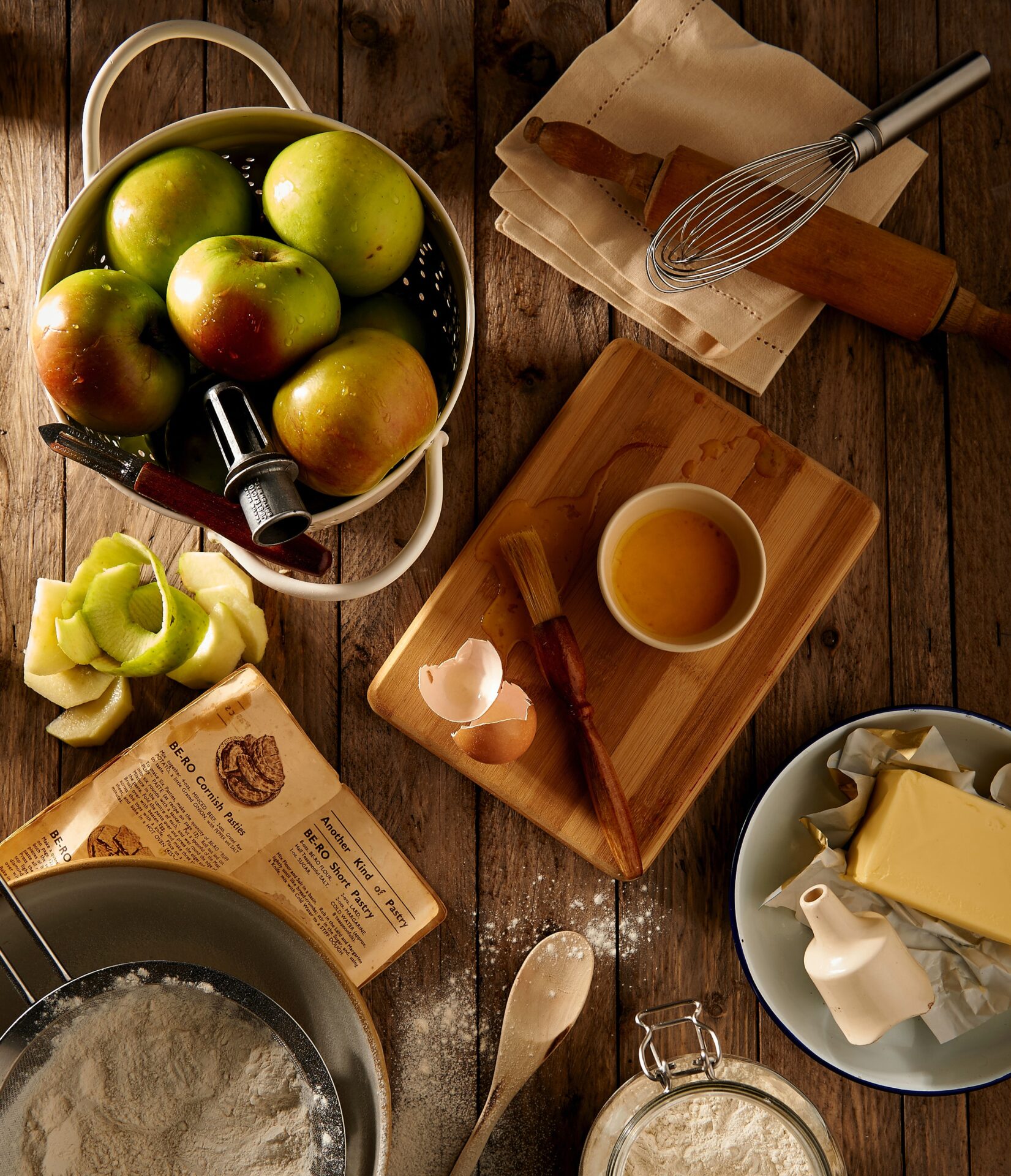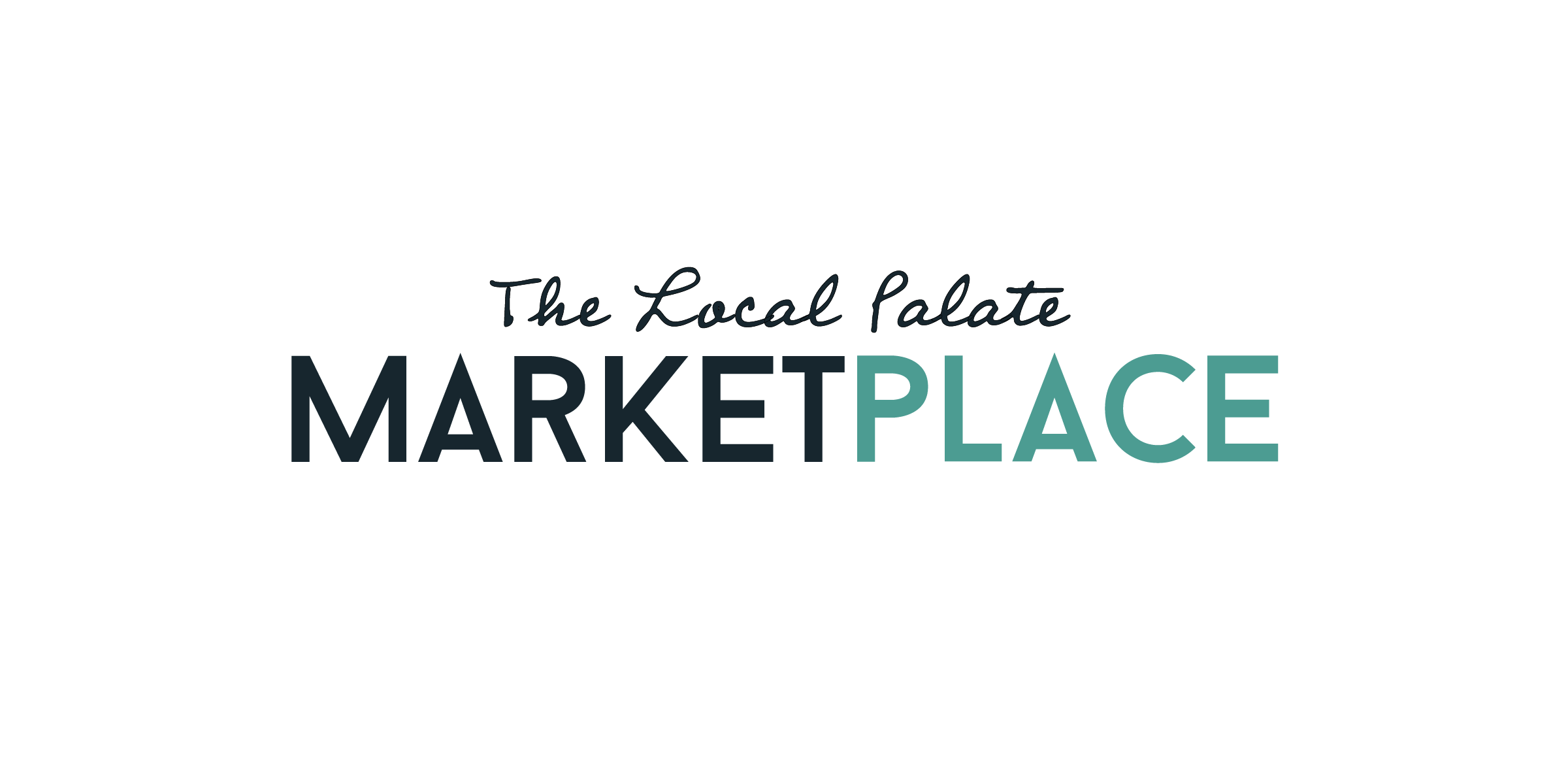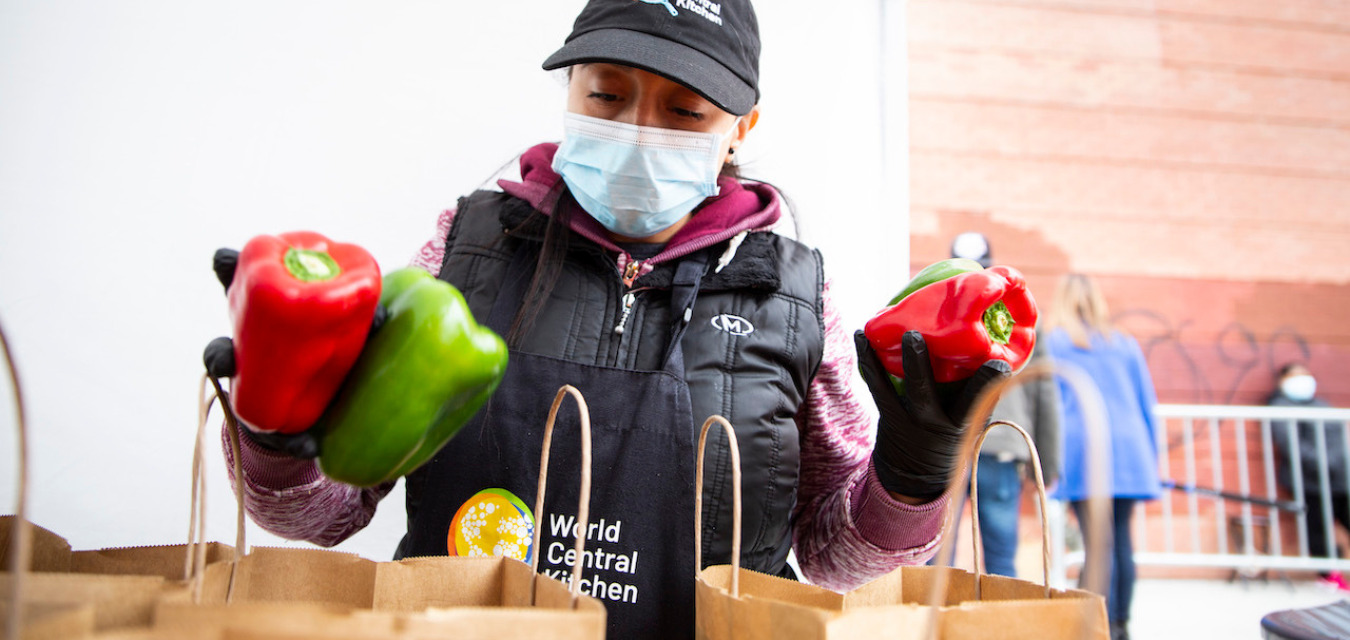From Nashville to Asheville and New Orleans to Charleston, chefs and restaurateurs have been forced to confront a series of difficult decisions revolving around the new reality of dining in a world of COVID-19. They have faced early decisions about how and when to shut down restaurant operations, how to take care of staff that have been furloughed or recalled to work, pivoting to a carryout/delivery model and whether and how to reopen as restrictions loosen.
These difficult choices have been made without much cohesive guidance from the government, leading to strategies that Charleston chef Mike Lata describes as, “We’re just throwing darts out here,” and that Nashville’s Margot McCormack explains with a culinary metaphor, “Sometimes you just have to throw spaghetti against the wall to see if it sticks.”
In New Orleans, Michael Gulotta realized that he was facing different sets of circumstances at his two restaurants, MOPHO and Maypop. He recalls consulting with his business partners, “At first we just waited. We sat and watched the pandemic unfold. We knew we could sit tight for about two months and now those two months are up, so how do we open it back up without killing ourselves again? We feel confident that MOPHO can do a pretty strong to-go business, as well as our little pub-grub spot, Rum and the Lash, that sits in the back of a dive bar not far from MOPHO. We are only going to be open five days a week for now, and only seven hours a day, so we can still get some family time. Maypop is the big unknown. It is in the tourist center of New Orleans; very few people actually live there, and it is completely surrounded by award-winning restaurants facing the same issues, and its menu is more high end and a bit experimental.”
Asheville chef Katie Button was operating two successful restaurants, her Spanish flagship Cúrate and her latest venture, Button’s & Co. Bagel Shop [now closed]. Along with her husband Felix, Button also operated a culinary tour company focusing on the Iberian Peninsula and was in the middle of opening a new events space called Tillie Hall above her quant bagel shop. “We were just launching that,” she jokes. “Terrible timing to be investing in an events space.”
McCormack was confronted with another personal disaster weeks before the Coronavirus turned the industry on its head when a tornado roared through her Five Points neighborhood in East Nashville the evening of March 3, inflicting serious damage to her two beloved eateries, Margot Cafe & Bar and Marche Artisan Foods. Tragically, two Nashville hospitality vets were killed as they left work from a nearby bar when the storm hit, so both the industry and the neighborhood were hurting.
McCormack has long felt a very personal affinity for East Nashville. “When we were first working on the Margot building in 2001,” she recalls, “people were constantly driving by, honking and waving, very excited. They were total strangers. Nobody that I knew.”
At that time, Nashvillians who lived on the east side of the Cumberland River were lucky to find fast food, much less the sort of soulful and seasonal European cuisine that McCormack had planned for her new bistro. She continues, “There was just an overwhelming neighborhood response. I got the feeling that the neighborhood was really invested in me and our success, and it made me want to do more. It was the same thing when this tornado happened. I knew how I felt, and I thought other people must be feeling the same way.”
Although Marche remained closed for a little longer, Margot Cafe was one of the first places to have their electricity restored in the days after the storm. “Everything was dark except for us,” says McCormack. “We were able to open for Thursday and Friday in the week after the storm, but our people tried to go to work on Sunday, and there was police tape strung up everywhere so nobody could get in while they shut us down for three more days to repair power lines to the neighborhood.”
Realizing that she had a lot of food and no customers to feed it to, McCormack wondered what her next step should be. She laughs, “My instant thought was ‘we could have a party!’ I hate to throw food away, so we thought we could throw a little block party to feed the workers who were salvaging buildings around us, offer them some solace and a place to chill.” A few phone calls later, and other chefs were also emptying their walk-ins and offering to help out. Wine, beer and spirits were donated by local distributors, and McCormack and her staff threw together an ad hoc menu of what she could make to feed her expected guests.
“My staff will tell you that I have these crazy ideas,” she admits. “I thought maybe 50 or 100 people would show up, but it turned into a little bit of magic.” Hundreds of neighbors collected in Margot’s parking lot, many of them seeing light and their friends for the first time since the storm. Many of them probably still haven’t spent time together in person since that magical night.
Margot didn’t realize it, but she had possibly provided the opportunity for many Nashvillians to offer and receive their last hugs for months, and the offers were enthusiastically accepted. Corona be damned! The staff cooked furiously, continuously stocking a buffet of whatever they could throw together until the food ran out at about 8:00 in the evening. McComack recalls fondly, “Someone told me, ‘You’re healing the neighborhood through your food.’ “
After that evening, business turned south for McCormack. “We opened for another weekend and were getting good numbers,” she explains. “But at the same time we were fighting the perception that the area around us was a war zone. It doesn’t make for merriment. It seems like every Sunday after we were first shut down, something horrible happened.”
On the Ides of March, the mayor declared a 50 percent capacity restriction, and McCormack describes what happened next. “It was a complete meltdown. ‘We were like where did everybody go?’ The next Sunday, all dining rooms were closed, and we tried to do to-go via phone orders for a couple of weeks before we told our people they’d probably be better off collecting unemployment.”
For Lata, the path to closing was much more abrupt. “We had just come out of Charleston Wine + Food the first week of March. During the festival, the conversation was just starting to happen. It was the first time I saw people bumping elbows; nobody wanted to shake hands. From sunup until 8 p.m., I think everybody honored social distancing pretty well,” quips Lata, “but I think after the alcohol consumption increased, people’s inhibitions lowered. That was a good last hurrah for us to get the festival in under the wire. But that ushers in the best quarter of the year for everyone in Charleston. Late February through August is when we can really make hay. Obviously that hasn’t happened and won’t happen this year.”
Lata recalls the decision timeline, “A week had passed since Food + Wine, and on March 16 we decided to get organized and meet with a half dozen of our peers, some local politicians and the mayor. We were all feeling the pressure to close, and we felt like the government should step in with guidance rather than our having to bear the burden of balancing our business and the health and welfare of the public. We asked the mayor to consider a shutdown.”
It was a difficult environment to be confronted with such far-reaching decisions. Lata explains:
“All this information was coming at us so fast. Even with this proposal, we felt like we were asking for too much, because these decisions come with great consequences, most of which we didn’t understand or have all the facts for. These were heavy decisions with nothing for us to feel good about basing them on because the information was coming at us like the equivalent of drinking out of a fire hose.

The sentiment was that we all wanted to close. So my business partner Adam and I scheduled a meeting with our banker to see what our options were, because we didn’t prepare for any of this any more than we do for a rainy day.
We decided on the morning of March 17 to shut down both of our restaurants (FIG and The Ordinary) right away. We talked to our banker and due to our history with them, we knew we could lean on them, even though we didn’t know exactly what we were asking for. We’re not alone; the bank is our partner in this mess. So we went back to the restaurants and told everyone that they could stop working immediately and to go home. And so we cleaned up, and by 5 p.m. that evening, the restaurants were empty. We just shut down for a good solid three weeks to figure all this out. The fear of the virus was the number-one thing, so that was the point we all went into quarantine and started making sourdough bread.”
Button saw the writing on the wall in her restaurant’s reservation book: “We saw business fall off over the weekend of March 13, and then watched reservations fall off a cliff. Our staff was already feeling worried and concerned about dealing with the tourists coming in from all over, so we made the decision to close on March 16 by watching the numbers. The day after, the governor mandated closing, and that was a good thing that needed to happen, because when the government makes a mandate like that, they have to help people by getting unemployment working. “
‘Seeing what happened in communities that saw their health systems overwhelmed is something you don’t want to see in your own community. As a business owner, the last thing I want to do is hurt my business. I am dying to get it back open and see people, but I also don’t want to be the cause of overwhelming the health system in my community. It’s challenging. At the same time, our whole business system is designed around people gathering together in close quarters together to enjoy an experience. Restaurants only work if you have volume and lots of people in a small space. If we have to close for public safety or operate at reduced occupancies, we’re happy to do it. We understand why, but we need help to be able survive the next year, 18 months, two years.”
Gulotta and his partners made the choice to shutter their restaurants at a time of relative strength. He explains, “We decided to close because, for one of the first times ever, we had a complete payroll in the bank plus some money to pay a few important bills, and by shutting it down we were able to basically go into a sort of hibernation while still paying our staff for all of their hours worked.”
Gulotta found himself confronted with another complicating factor: “A major problem is that my business partners and I all have young children, and all of our children’s mothers are essential workers, so we’ve been on full-time dad duty. It has really limited our ability to move forward, but it has also given us a new outlook on how much we were working and how much time we were missing with our kids. We knew we could sit tight for about two months, and now those two months are up, so how do we open it back up without killing ourselves again?”
In addition to safety concerns, all four chefs paid special attention to the plights of their staff members as well. “All our employees knew we couldn’t afford anybody if we were shut down,” shares Lata. “We were thinking it might be for two weeks. The primary goal of shutting down was to stop spending money, but we committed to covering the health care for employees who had it through April.”
Both Lata and McCormack also launched GoFundMe campaigns to solicit aid from their customers to go toward their employees, with each raising more than $50,000 for their efforts. Lata took more direct actions to assist his displaced staff. “We kept a small team to help staff navigate unemployment and help any way we could. We emptied our walk-ins by feeding our employees for a week and a half. We cooked a staff family meal every day, and that turned into soup and pantry items, and by the beginning of week three we started feeling uncomfortable about having anybody into the restaurant. So we invited the team to come in one-by-one, consolidated all the food from both restaurants into the FIG walk-in and just basically had a farmer’s market for our employees and let them take whatever they wanted. They just stocked up their houses.”

Another complication was that the terms of the Payroll Protection Plan mandated bringing back a full complement of payroll equivalents to qualify for loan forgiveness, but the increased unemployment benefits being offered were more generous for furloughed employees in most cases. Plus, the PPP benefits were initially only guaranteed through the end of June. “We’re factoring our staff in a lot with our decisions,” shares McCormack, “and the generous unemployment benefits are helping them to make good decisions.” Lata feels the crunch of the regulations, explaining, “There’s just no way to support 100 percent of your staff on 50 percent capacity for your restaurant. We didn’t want to take anyone off of unemployment that didn’t want to, so we’re ramping up slowly to the full-time equivalents goal of the PPP. The fact that there wasn’t already a plan for something like this is kind of strange, but PPP doesn’t work as well for businesses that were forced to shut down completely.”
Button is also concerned about if and how to bring back her staff: “The tough thing for the industry is that we can’t rehire them all. It would be a weird situation to rehire them at a pay that’s less than unemployment, and I don’t want to be the employer who brings them back and then says, ‘Just kidding!’ It’s really important that Congress extends the plan before the PPP runs out. We might end up being closed for the entire length of the forgiveness period because it takes time to implement a safe reopening plan. The government needs to step in and say that they understand how the restaurant industry has been impacted, like how they did that immediately for the airline industry!”
McCormak agrees with Button on this point, saying, “What it has shown is that big companies survive and little companies fold. I’m not very hopeful, but the best way to get through this is to pull up my bootstraps, but my big girl panties on and keep working. The people who have really helped us out are our friends, our community. We’re part of the fabric of Nashville, but we’re not the only ones suffering.”
Gulotta also points to the larger community: “I think one point most people don’t realize is that restaurants are huge job creators. Most of our revenue passes right through us; and it’s not just to our employees, but also fishermen, farmers, linen companies, bakeries, nurseries, cooling and refrigeration techs, butchers and so many more who make their living off of us. Plus, most of our team members are also musicians, artists, performers, festival hands and band managers. Figuring out how to recapture that revenue so we can put money in these culturally essential people’s pockets (while keeping my and my business partner’s sanities intact) is so important to our city and our culture. Hopefully we can find a way forward that achieves all of these goals.”
Like many restaurants across the South, these four chefs have had to change their business models to scrape by until diners return en masse. While Lata’s and Gulotta’s operations remained essentially closed for most of the spring, Button has converted her bagel shop space into a sort of bodega offering prepared versions of Cúrate favorite ready to reheat in the oven at home as well as gazpachos, meal kits and exotic Spanish grocery items.
She describes her decision to offer this service: “We felt like prepared foods could be higher quality than hot food takeout. We’re able to use ingredients that are fresher and more delicious, and people have seemed really happy with that. They really missed that food! We started out doing it to put the PPP money into use, but now we look at it as a new business model we can use throughout the year in case of another shutdown.” Button is also planning to add nationwide shipping through Goldbelly.com.
McCormack chose not to create a totally new menu for carryout, preferring to continue to cook her regular food to order for delivery and takeout, but it’s still not the same for her. She bemoans, “It’s depressing to cook for nobody in the restaurant. Our dining room has been turned into a storage container for to-go supplies, and that’s just sad to look at. We had to cobble together a team of people who want to come in to work, and it’s been very stressful. It’s very taxing in a different way. I’m leaving the restaurant earlier than I ever have, but I get home in a Corona fog. For a $25 meal, people want more than food in a box. They want an experience. It seems like the only places being successful are Mexican and pizza restaurants because they already had to-go platforms. We miss the customers and the gratification, but we love seeing names that we know on tickets. Some of them have sent us fan mail and postcards, and we’re more grateful now than ever!”
Button and Lata have both been instrumental in the efforts of the Independent Restaurant Coalition and the organization’s work to keep the government apprised of the unique needs of the hospitality industry.
Lata says he has particularly benefited from the chance to interact with other industry leaders like Andrew Zimmern, Tom Collichio, Rick Bayless and Frank Stitt, saying, “I sit in on IRC Zoom meetings, and it’s been a comforting thing to be able to log in a couple times a day and listen to them speaking about various strategies on those calls among peers. What we’ve realized is that everybody’s situation is different. That’s the thing about restaurants is that they reflect their own leadership so differently and beautifully. Initially we took a look at this thing as if we were solely responsible to dig ourselves out of this hole. But I can’t say how great it was to sit in on those calls with the most successful chefs and restaurateurs in the country and be able to feel that there was this sense of community that was stronger than you could imagine. The most incredible thing has been the expertise that has come together and the endless resource of talent and intelligence that has been available for everybody!”

Lata concludes, “We’re still small enough to be nimble, and we’re owner-operated, so we can be hands-on when needed. I have to be optimistic that we’re gonna make it through. I know that it’s going to be pretty painful for a long time, and whether or not we get any further assistance is still yet to be determined. Fingers crossed. We’ll just keep doing what we can until we can’t!”
share
trending content
-
Two Outstanding Cookbooks, One Delicious Event
by Erin Byers Murray -
Besting Barbecue Chicken with Elliot Moss
by Emily Havener -
River City Reawakening | Listen
by Erin Byers Murray -
The Ultimate Alabama Dining Guide | Listen
by Jennifer Stewart Kornegay -
6 Must-Visit Music Joints Across Mississippi
by TLP's Partners
More From In the Field
-
Kohlrabi: Pretty Ugly
-
Meet the Newest James Beard Award Winners from the South | Listen
-
OKO Brings Filipino Soul to East Austin | Listen
-
The Local Palate’s Guide to Chattanooga | Video
-
Find Your Top Dry Bar in the South | Listen









